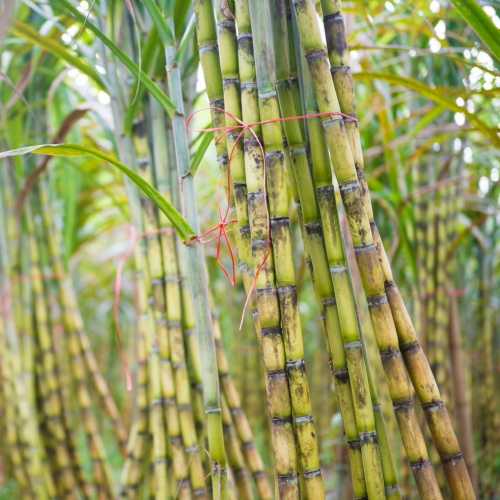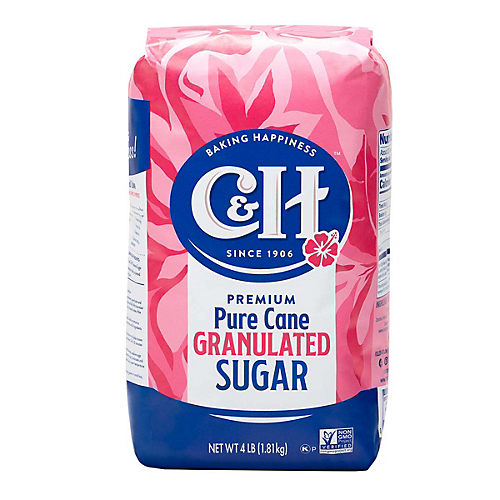Cane Sugar Processing Explained: What Occurs Inside a Sugar Mill
Cane Sugar Processing Explained: What Occurs Inside a Sugar Mill
Blog Article
Checking Out the Comprehensive Tips Associated With Walking Stick Sugar Processing From Gathering to Improvement
The process of walking cane sugar manufacturing includes a collection of elaborate actions, beginning with the careful harvesting of sugarcane and finishing in the improvement stages that ensure the last product fulfills industry criteria. Each stage, from the extraction of juice to the filtration and condensation procedures, plays a vital role in determining the high quality and character of the sugar.
Collecting Sugarcane
Collecting sugarcane is a critical step in the cane sugar handling chain, as it straight affects the top quality and yield of the final item. Correct timing and strategies are important throughout this phase to guarantee ideal sugar content and lessen losses. Normally, sugarcane is harvested when it reaches maturation, generally 12 to 18 months after growing, defined by a high sucrose concentration.

Post-harvest, the sugarcane should be refined swiftly to stop sucrose deterioration. Preferably, harvested walking stick needs to be transported to refining centers within 24 hr to protect sugar top quality. As a result, reliable logistical planning is important to keep the integrity of the collected plant throughout the supply chain.
Removal Process

The smashed walking stick goes through a collection of pushing operations to maximize juice recuperation. Generally, warm water is sprayed onto the smashed walking stick, creating a countercurrent flow that helps liquify the sugar while likewise aiding in the removal process. The juice collected from this operation contains not just sugar however likewise numerous organic compounds and contaminations.

To improve removal effectiveness, some centers might utilize diffusion approaches, where the sugarcane is saturated in warm water, allowing the soluble sugars to diffuse into the fluid. The resulting juice, rich in sucrose, is after that directed to succeeding handling stages, laying the foundation for filtration and refinement. The removal process is thus crucial in establishing the high quality and return of the final sugar product.
Purification Methods
The filtration techniques used in walking cane sugar handling are vital for changing the raw juice into a high-quality sugar product. These techniques primarily intend to get rid of pollutants, such as dirt, plant products, and inorganic materials, which can adversely impact the last product's taste and color.
This procedure entails adding lime and warm to important link the raw juice, which promotes the coagulation of impurities. In addition, the usage of phosphoric acid can enhance the clarification process by further binding pollutants.
One more significant technique is carbonatation, where carbon dioxide is introduced to the clarified juice. This reaction produces calcium carbonate, which catches staying pollutants and advertises their removal.
Moreover, turned on carbon therapy might be related to adsorb any type of staying colorants and organic pollutants, making certain an extra polished product. The combination of these methods efficiently prepares the sugar juice for succeeding steps in the refining procedure, setting the phase for the manufacturing of premium walking stick sugar.
Crystallization Methods
After the filtration stage, the following vital step in cane sugar handling includes condensation methods, which play a crucial function in transforming the made clear juice right into solid sugar. This process normally employs 2 main approaches: spontaneous crystallization and regulated formation.
In spontaneous condensation, supersaturated sugar services are enabled to cool down naturally, causing the development of sugar crystals with time. This approach is less complex however might lead to uneven crystal dimensions and reduced purity degrees. On the other hand, managed crystallization is an extra specific method where seeding, temperature, and concentration representatives are meticulously handled. This approach permits the uniform development of sugar crystals and greater Recommended Reading pureness.
During condensation, the made clear juice is concentrated through evaporation, increasing its sugar material up until it gets to supersaturation. As soon as this point is accomplished, either approach can facilitate the crystallization process. Cane Sugar Processing. The resultant sugar crystals are after that separated from the remaining syrup through centrifugation
Eventually, the option of condensation method affects the high quality, size, and purity of the last sugar item, making this step crucial in the overall cane sugar processing procedure.
Refinement and Packaging
Exactly how can the purity and high quality of walking stick sugar be additionally enhanced after condensation? The refinement process plays an important function in accomplishing high-quality cane sugar. Following crystallization, sugar undertakes a comprehensive washing to eliminate pollutants and residual molasses. This is generally accomplished using warm water or steam, which helps liquify and draw out unwanted elements while protecting the sugar crystals.
Following, the sugar goes through a process called centrifugation, where it is rotated at high speeds to separate the purified sugar crystals from the staying liquid. After centrifugation, the sugar is frequently further refined with a technique called carbonization or phosphatation, which makes use of triggered carbon or phosphoric acid to get rid of color and off-flavors.
As soon as refined, the sugar is dried out to achieve the preferred moisture web content, making sure that it remains steady throughout storage space and transport. The final action involves product packaging the polished sugar in moisture-proof and impermeable containers to keep its high quality and protect against contamination. Cane Sugar Processing. Proper packaging not just extends service life yet also promotes easy handling and distribution, making sure that customers receive sugar that meets the greatest criteria of purity and high quality
Verdict
The thorough steps entailed in walking cane sugar processing, from the precise harvesting of sugarcane to the complex improvement and packaging stages, highlight the relevance of each stage in ensuring high-quality sugar manufacturing. Ideal harvesting strategies, reliable removal approaches, and extensive filtration procedures jointly contribute to the final product's pureness and security. The formation and succeeding product packaging methods additionally enhance the integrity and shelf life of the sugar, highlighting the complexity and precision inherent in this click here to read vital agricultural industry.
The procedure of walking cane sugar manufacturing includes a series of intricate actions, starting with the cautious harvesting of sugarcane and culminating in the refinement stages that guarantee the final item satisfies market standards. Ideally, gathered cane should be transferred to processing centers within 24 hours to maintain sugar top quality.In spontaneous formation, supersaturated sugar options are enabled to cool normally, leading to the development of sugar crystals over time - Cane Sugar Processing. The improvement process plays an essential duty in accomplishing top notch walking cane sugar.The thorough steps entailed in walking stick sugar processing, from the careful harvesting of sugarcane to the intricate refinement and packaging phases, underscore the relevance of each phase in making certain high-grade sugar production
Report this page